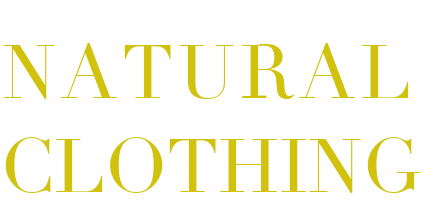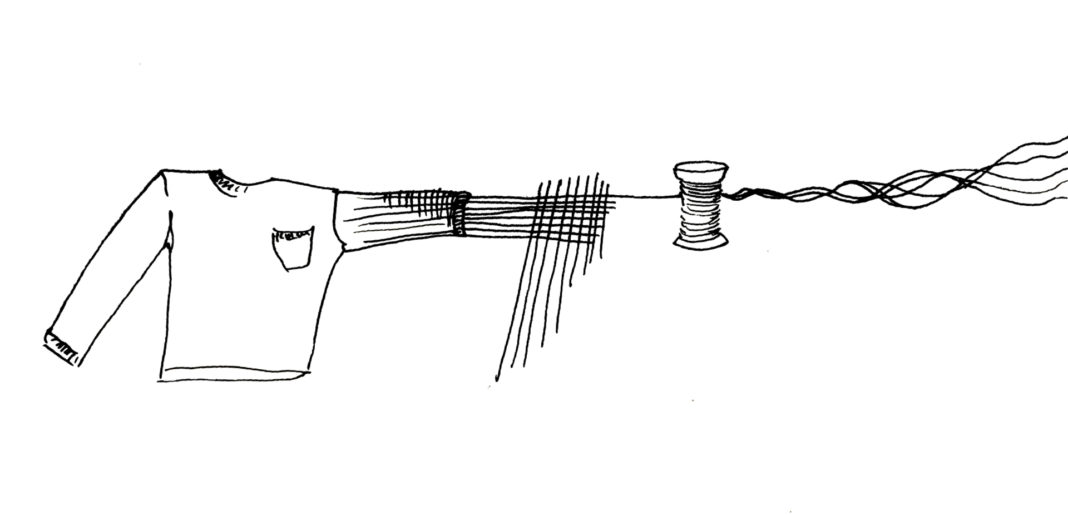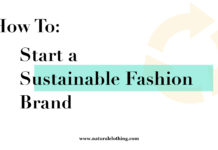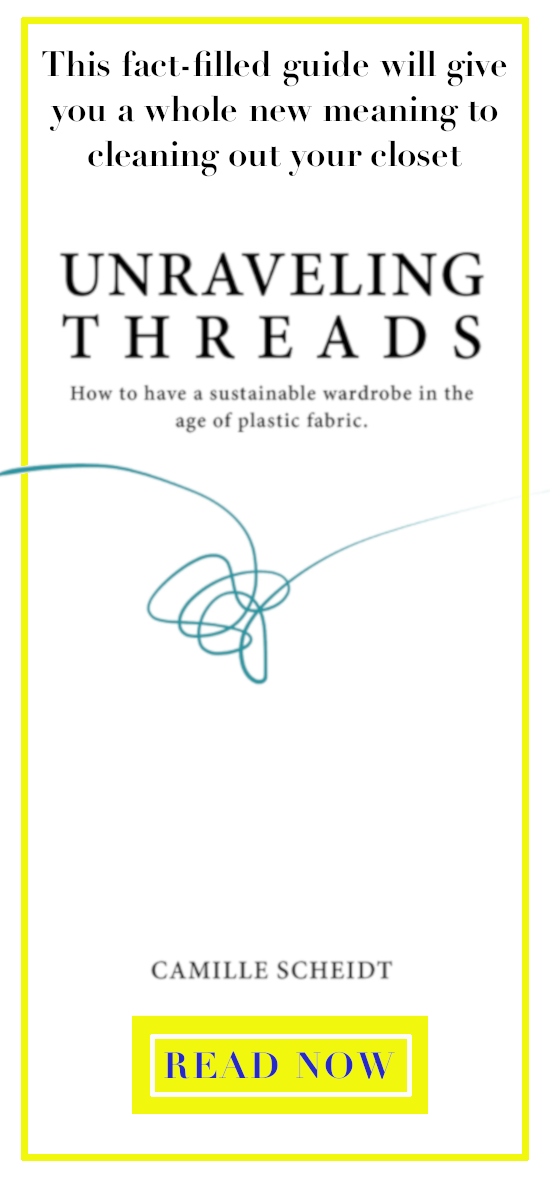If you’re looking for ways to lower your negative impact on the environment, your clothing habits are a great place to start. The apparel industry is one of the most polluting industries in the world. The fashion industry is also heavily reliant on another pollution behemoth: the oil industry. The apparel industry’s reliance on oil is not just fuel for processing, production, and deliveries, but for raw material used to make synthetic fabrics like polyester, nylon, and acrylic. Synthetic fabrics are made and sold cheaply, and are quickly becoming the standard.
how our clothing choices effect the environment & the great potential of sustainable clothing
Synthetic fabrics are not just polluting the environment, but expose our bodies to toxins as well. Polyester and other synthetics harbor and grow bacteria through multiple washes and wears. Plastic fibers in synthetic fabrics also absorb environmental toxins. Further, synthetic fabrics tend to pill and wear faster than natural fiber fabrics. Unfortunately, once discarded, synthetics can take hundreds of years to decompose and leach toxins into soil and water while they are breaking down. These fabrics are detrimental in their production, use, and afterlife.
By choosing natural fibers that are easier on the environment and our bodies, we can change the apparel industry in a big way and see extensive benefits. Choosing sustainable clothing made with natural fabric will reduce our rate of consumption and reduce the negative toll the industry takes on the global environment significantly.
NATURAL FIBERS
A natural fiber is found in nature, without any man made help. For the most part, natural fibers have a lower environmental impact from cultivation through use of the product. Natural fibers are also biodegradable, some decomposing in a matter of weeks.

HEMP FABRIC
Hemp is a natural fiber that is extremely comfortable, durable, and low impact. Clothing made with hemp fabric is resistant to UV, mold, and mildew. Hemp clothing is highly absorbent and breathable. Hemp fabric is lightweight, with a similar drape to linen. It can easily be blended with other fibers to change the weight and hand of the fabric.
Hemp can be grown as a carbon negative crop. It’s a hearty plant that requires no chemical fertilizers, pesticides, or GMO seeds. In fact, hemp enriches the soil in which it is grown. Hemp is one of the most promising crops for both farmers and the sustainable clothing industry. Learn more about hemp fabric here.
LINEN FABRIC
Linen is made from flax. You might recognize flax from the flax oil supplement or the seeds you put in your smoothie. The latin name for the species is usitatissimum, which means, ‘most useful’. Flax can be an eco friendly crop to cultivate as it is fairly low maintenance, using minimal fertilizers and pesticides.
Linen is an excellent choice for warm weather clothing. The fabric is highly conductive, so constantly feels cool to the touch. It also absorbs and releases moisture quickly, preventing the fabric from feeling damp. Linen does not pill or lint, is dirt and stain resistant, and easy to clean and care for.
Linen has a long product life, but given the right conditions (like a compost pile), can decompose in just 2 weeks. Find out more about linen fabric here.

WOOL – CASHMERE, ALPACA, MOHAIR, & ANGORA
Wool is a broad category of natural fiber encompassing those fibers collected from animals. Alpaca, cashmere, mohair, and angora are all examples of wool. Wool is naturally a great insulator as well as flame resistant. Some people encounter skin sensitivity issues with wool due to the lanolin that is present in sheep wool. Alpaca wool offers a great alternative to those with sensitive skin.
SILK FABRIC
Silk is a natural fiber produced by insect larvae. The fabric is soft and smooth, while not slippery. Silk absorbs and releases moisture quickly and is a very strong fiber.
The larvae produce silk while building their cocoons. The cocoons are boiled to kill the larvae and separate the silk fibers. For this reason, many people are against the production of silk. In which case, Cupro, a semi-synthetic fabric, offers a fantastic vegan alternative. Since it is an animal product, silk can have higher environmental impact than many other natural fibers. Get the full lowdown on silk fabric here.
Silk is easier to care for than you may think. A good rule of thumb for silk cleaning and care is to treat it similarly to your hair. Get the full dos and don’ts here.
ORGANIC COTTON FABRIC
Organic cotton is a natural fiber that is soft, supple, and versatile. Certified organic cotton is grown in chemical free soil, harvested after a natural growing season without chemical stimulants, and whitened and finished with a nontoxic process. The organic certification also includes a number of fair trade requirements for all workers involved in the cultivation of the cotton.
Unfortunately, even organic cotton crops demand a great deal of water. Cotton crops need a long growing season with an abundance of sunshine as well as water, meaning most crops are heavily irrigated.
Cotton that is not grown organically uses high quantities of chemical fertilizers, pesticides, and finishing products. Not only are these chemicals harmful to the environment and our personal health, but a huge financial burden on farmers as well. For more on organic cotton as well as the effects of non-organic cotton, check out our page here.
JUTE FABRIC
Known as ‘the golden fiber’, jute is a soft and shiny fiber. Jute does not need chemical fertilizers, pesticides, or extensive irrigation to grow. It’s afforable to grow and results in a high yield for farmers. Jute can mimic wool, silk, or cotton in its final product. It’s a highly breathable fabric, while being a great candidate for sound and temperature insulation. Read more about jute fabric here.
SEMI-SYNTHETIC FABRIC
Semi-synthetic fabrics are made from natural materials that have been extracted through a chemical process. Here we’ll discuss our two favorites, that have great benefits for personal wear and have low impact on the environment.
LYOCELL – TENCEL
Lyocell, known commonly by the brand name Tencel, is made from sustainably cultivated eucalyptus trees. Tencel is processed with a non-toxic solution that is reclaimed and reused at a rate of 99.8%. The .2% of the solvent not reused is broken down responsibly. None of the solvent remains in the fiber produced.
Tencel is naturally absorbent, temperature regulating, hypoallergenic, anti-static, and antibacterial. Meaning, you won’t get hot, itchy, sticky, and stinky, like you might in a polyester shirt. The fabric can be finished to feel like anything from suede to silk to denim. It can also be manipulated to be stretchy, so no more need for that 5% of spandex. We see Tencel being a staple in the future of sustainable clothing.
CUPRO
Cupro is a semi-synthetic fabric that is very easily mistaken for silk. It is made from cotton linter. Cotton linter is a part of the cotton plant often discarded as waste.
Cupro is temperature and moisture regulating, keeping you both cool and warm while sweat-free. These properties not only enhance your comfort, but cut down on wash cycles as well. Cupro is also a static and cling free fabric and extremely favorable to sensitive skin.
Though Cupro comes from a water intensive crop (cotton), it utilizes a part of the plant considered waste by other manufacturers. So as long as the producer is working with discarded cotton linter, Cupro earns our stamp of approval. We have more on Cupro here.

















I love natural fibers & very tired of pro Earth savers making plastic and fake garments such as faux leather they call vegan.